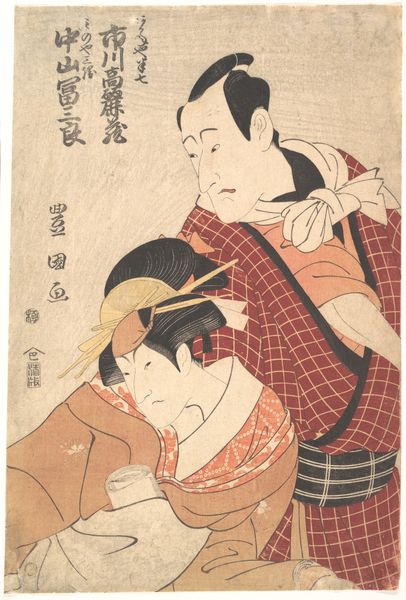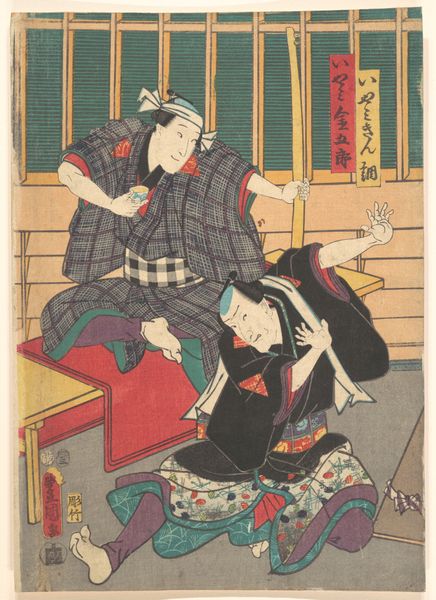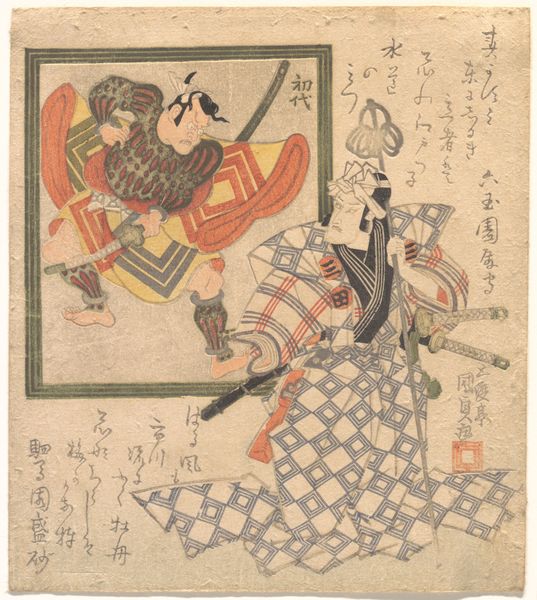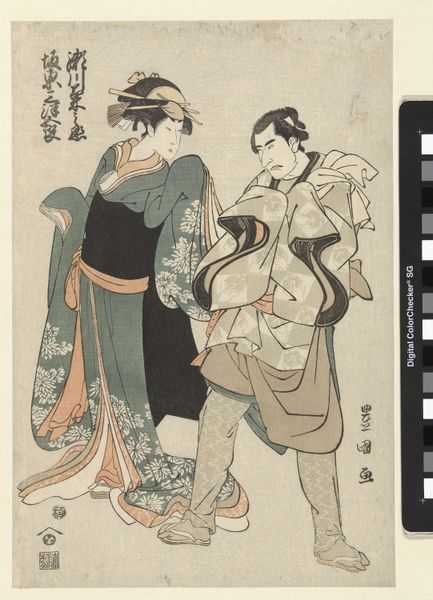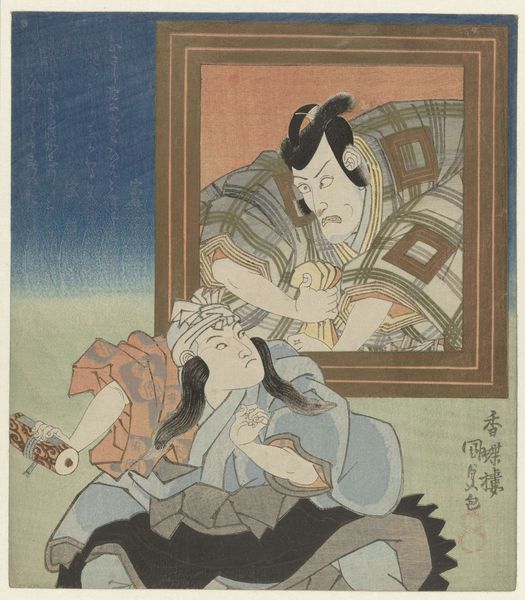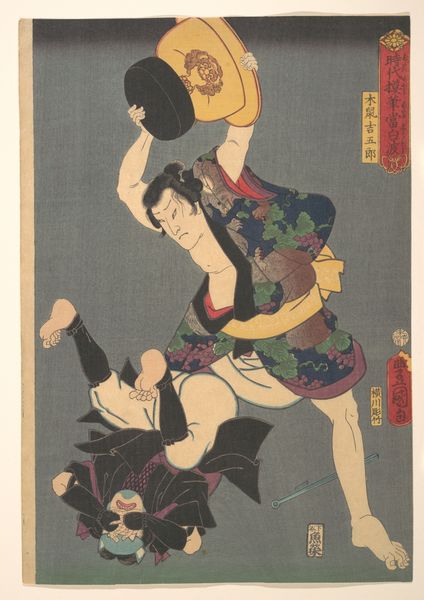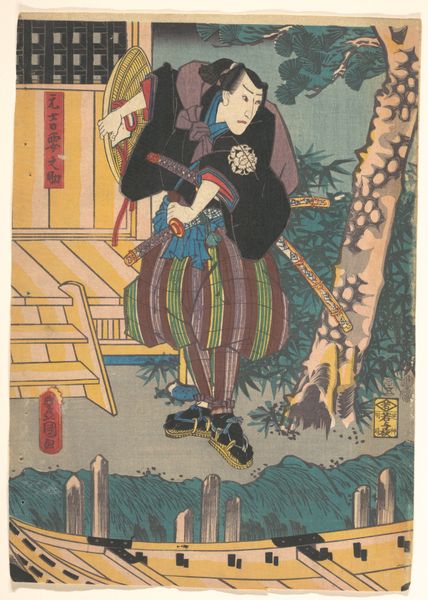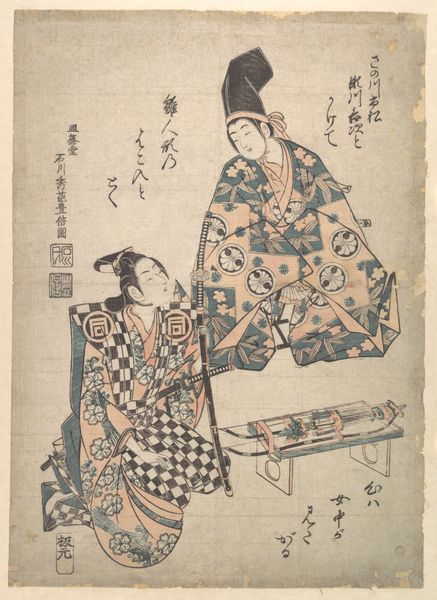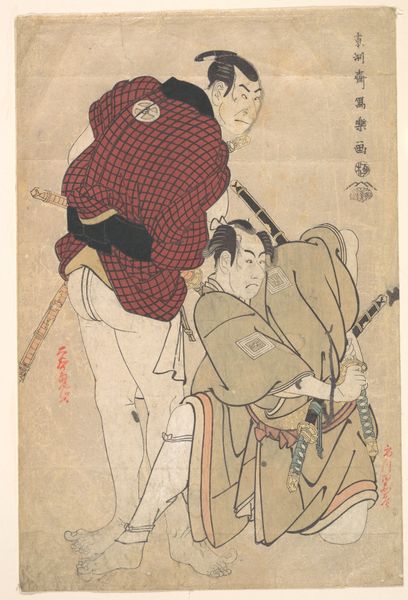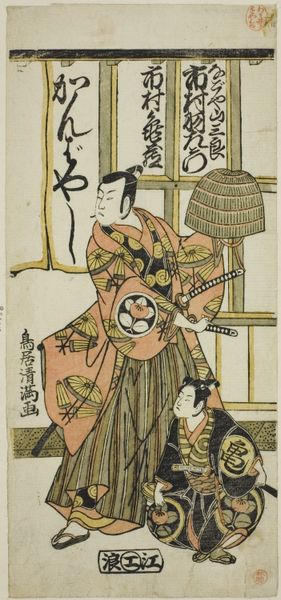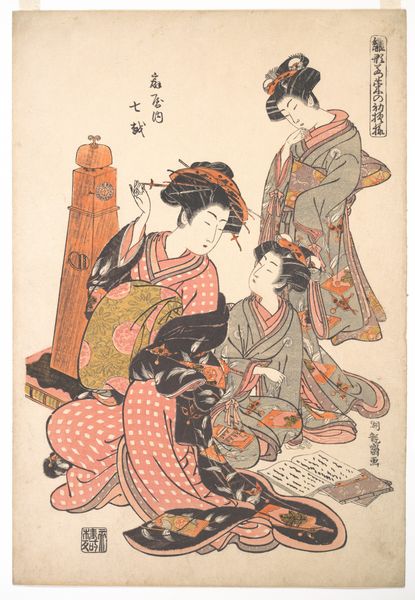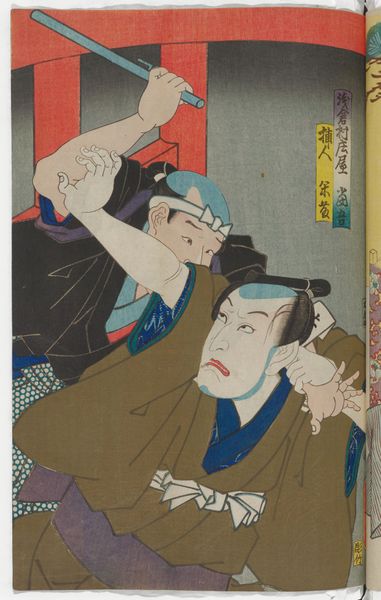
print, woodblock-print
#
weapon
#
narrative-art
# print
#
asian-art
#
ukiyo-e
#
figuration
#
woodblock-print
#
history-painting
Dimensions: height 368 mm, width 245 mm
Copyright: Rijks Museum: Open Domain
Editor: This is "In gevecht," a woodblock print made in 1839 by Utagawa Sadamasu II, currently at the Rijksmuseum. It's incredibly dynamic – you can practically feel the movement of the fight! What can you tell me about how its creation reflects the world around it? Curator: Well, let's think about woodblock printing itself. The Ukiyo-e style was very popular, yes, but the process relied on artisans – carvers, printers – a whole collaborative production chain. These weren’t singular artistic visions in the traditional sense. Consider the economic forces that sustained this production. Who was consuming these images? Editor: I see your point. So, not just wealthy patrons commissioning individual artworks, but something more widely accessible. Curator: Exactly. We see mass production meeting artistry. How does this print, portraying conflict and likely violence, speak to the Edo period’s social hierarchies or unrest? Were such images simply entertainment, or did they, perhaps subtly, reflect or even critique the samurai class's dominance? Look closely at the detail on the robes and weapons; even that reveals skilled labor. Editor: It's fascinating to think about the labor that went into making the art accessible in this way. Does the relatively affordable nature of these prints maybe democratize the consumption of heroic stories, perhaps offering alternate visions of power? Curator: Precisely. And consider the materiality: wood, ink, paper, the very stuff of the print itself, and where those materials came from. Each choice implies trade routes, resource management, and therefore, political and economic realities that all contributed to this particular expression. Do you agree that this helps us see the print not as simply a picture, but as an artifact embodying its era? Editor: Absolutely. I’d never thought about it this way – as a tangible piece of history made through social structures and labor as much as artistic skill. I’ll definitely look at art differently now!
Comments
No comments
Be the first to comment and join the conversation on the ultimate creative platform.
